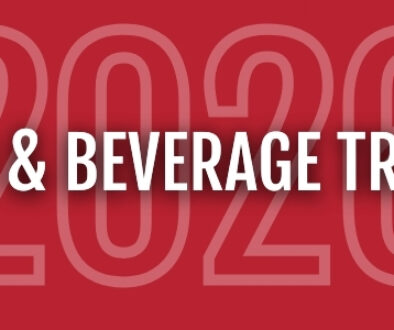IDFA Urges Against Premature Establishment of Regulatory Definition for Ultra-Processed Foods
HART’s Insights
The International Dairy Foods Association (IDFA) is urging federal agencies not to rush the creation of a regulatory definition for “ultra-processed foods.” In its comments to the FDA and USDA, IDFA emphasized that dairy products such as milk, cheese, yogurt, and butter provide essential nutrients and should be carefully considered given the current lack of scientific consensus.
Key Takeaways
- IDFA is cautioning against a premature regulatory definition of “ultra-processed foods” that could unintentionally include nutrient-rich dairy products.
- The organization stresses that dairy processing methods—like pasteurization, fortification, and lactose removal—are essential for safety, nutrition, and accessibility.
- Policy changes in this area could influence how dairy processors market, label, and communicate product benefits.
- Staying informed on regulatory developments helps processors anticipate and plan for future compliance needs.
Why This Matters For Dairy and Cheese Processors
Llabeling and classification decisions at the federal level can directly affect how your products are perceived by consumers and policymakers. A term lacking clear regulatory consensus like “ultra-processed” could create unnecessary confusion in the marketplace, impacting demand, formulation decisions, and labeling requirements.
From our view at HART Design & Manufacturing in Green Bay, processors that stay proactive about evolving food policy and regulatory standards are better positioned for long-term stability. By combining safe, sanitary automation with flexible equipment design, plants can maintain compliance, support transparency, and adapt quickly to consumer expectations—without compromising efficiency or product integrity.
On October 22, the International Dairy Foods Association (IDFA) submitted comments to the U.S. Food and Drug Administration (FDA) and the U.S. Department of Agriculture (USDA) in response to the agencies’ request for information to help develop a uniform definition of “ultra-processed foods” for human food products in the U.S. food supply. The following quote should be attributed to Roberta Wagner, IDFA’s senior vice president of regulatory and scientific affairs:
“IDFA has worked across the U.S. dairy industry and in partnership with the federal government to bring wholesome, healthy, and affordable dairy foods to American families for decades. High-quality, safe American dairy products are proudly made with milk from U.S. dairy farms. Milk, yogurt, cottage cheese, cheese, butter, infant formula, milk and whey powder, and other dairy foods all provide essential nutrients to Americans. Any attempts by the federal government to label such dairy foods as ‘ultra-processed’ or ‘highly processed’ foods without the support of a robust body of science, or clear scientific consensus, will confuse consumers, hinder policymakers, and reduce the consumption of nutrient-rich dairy products, which are currently under-consumed according to the federal government’s own nutrition guidelines.
“Nutrition policies must not intentionally or inadvertently discourage the consumption of nutrient-rich, yet under-consumed, food groups such as dairy. IDFA believes that setting a regulatory definition for ‘ultra-processed’ or ‘highly processed’ foods is premature given the inconsistent and inconclusive body of existing science and the absence of causation between the consumption of these foods and specific negative health outcomes. We maintain that nutrient-rich and processed foods are not mutually exclusive. To deliver nutritious foods to consumers of all socio-economic backgrounds living in varied communities across the country, dairy food makers use a variety of processing methods to ensure food safety (pasteurization), enhance nutritional value (fortification with vitamin D), meet consumers’ dietary needs (treatment with lactase enzyme to remove lactose), and extend shelf life to reduce food waste.
“IDFA recommends that the federal government focus its efforts to reduce food-related chronic disease on enhancing existing governmental initiatives to educate and encourage consumers to consume moderate portion sizes and construct a balanced diet that aligns with federal dietary recommendations, including consumption of nutrient-rich foods like dairy.”
Source: International Dairy Foods Association
HART Perspective: Practical Next Steps For Dairy Processors
Policy shifts can move quickly, and those who plan ahead tend to navigate them most smoothly. Three steps we recommend:
- Audit labeling and documentation practices. Confirm that ingredient statements and product claims align with current FDA and USDA guidance, and prepare to adjust if new labeling terms emerge.
- Prioritize traceability and transparency. Equipment that supports automated data capture, sanitation verification, and production reporting helps plants demonstrate regulatory compliance with less manual oversight.
- Engage your team. Cross-functional awareness, especially among operations and quality teams, ensures quick adaptation if new definitions or labeling standards are introduced.
For plants evaluating modernization opportunities, we can provide a brief line review to identify where equipment updates can simplify compliance while improving throughput and sanitation.
What This Means For Dairy & Cheese Plants
- Compliance: Equipment designed with traceability and automated reporting streamlines documentation for future labeling or processing regulations.
- Efficiency: Sanitary design reduces cleaning time and supports continuous improvement in food safety programs.
- Adaptability: Flexible, modular systems allow plants to pivot quickly if product categories or regulatory terms change.
Keep Up To Date On Cheese Industry News
Find all of HART Design & Manufacturing’s current industry news here.




